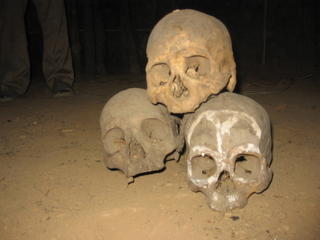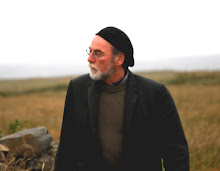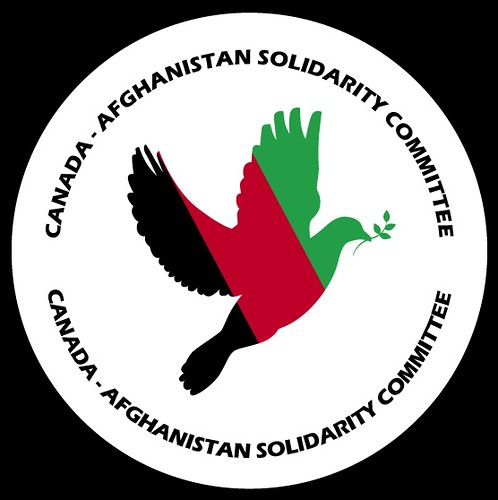Afghan ex-pats unashamed of Canada
 Maybe it’s because a radical faction that has been accused of assault, stalking, e-mail hacking, and “thuggish lunacy” has risen to a position of prominence within Vancouver’s post–9/11 antiwar movement.
Maybe it’s because a radical faction that has been accused of assault, stalking, e-mail hacking, and “thuggish lunacy” has risen to a position of prominence within Vancouver’s post–9/11 antiwar movement.Maybe its partly because Vancouver’s main antiwar coalition has relied too expediently on “placard language” without first clearly thinking things through.
Whatever the case, Vancouver’s antiwar activism is quickly moving away from the broad base of support for Canada’s refusal to join the Anglo-American enterprise in Iraq, and it is jettisoning any hope of solidarity with Vancouver’s 6,000-member Afghan émigré community.
“I am sure there are no Afghans in that group. We would disagree with them totally,” says Ferooz Sekandarpoor, the 30-year-old Web-site coordinator with the Vancouver Institute for Afghan Studies (http://www.vifas.org/default.aspx.) “I might have agreed with some things they said about Iraq, but the Afghanistan situation, I don’t support their cause.”
In recent months, Vancouver’s Mobilization Against War & Occupation has quickly emerged as the most active antiwar group on Canada’s West Coast. Its strategy has been to increasingly conflate the Iraq war with what it calls Canada’s “illegal” and “imperialist” war in Afghanistan.
It was MAWO that organized the September 24 rally at the Vancouver Art Gallery to coincide with rallies across the United States protesting the Iraq war. It was MAWO’s massive banner (“Canada Out of Afghanistan! US/UK Out of Iraq!”) that was draped from the Burrard Bridge that day.
Organizer Shannon Bundock says MAWO organized 30 events on 16 B.C. campuses in the two weeks before the September 24 rallies, and has gathered more than 7,000 signatures on a petition to Prime Minister Paul Martin calling for Canada’s immediate withdrawal from Afghanistan.
Sekandarpoor, who also works as the senior technical editor with an Afghan community program at Vancouver’s multicultural Channel M, says: “I bet that zero Afghans have signed that petition....99 percent of the people from Afghanistan in Vancouver, they support our troops in Afghanistan.”
Most Canadians are completely unaware of the great strides that have resulted from the Canadian government’s tangible demonstrations of solidarity with the people of Afghanistan, says Sekandarpoor.
“Unfortunately, the media here, they don’t talk about our troops and the work they’re doing there. Canadians are playing a big role, especially in Kabul. If they were gone for even two days the bloodshed would be back again,” Sekandarpoor says. “We are happy and very blessed to have some troops in Afghanistan.”
Sekandarpoor says Canadian troops were vital in providing security for Afghanistan’s September 18 elections, when more than six million Afghans chose from among roughly 5,800 candidates for positions in provincial councils and the national parliament. “This is because of the help from other countries. There is not censorship now. There’s lots of television shows. There is freedom of speech, and there is more freedom of speech protection in Afghanistan than any of its neighbours.”
Still, despite the undercurrent of division within Vancouver’s anti-war movement, there’s apparent consensus around one simple statement: Troops out, now.
MAWO’s core organizers include that “thuggish” faction that the more broadly based Stopwar.ca coalition expelled two years ago. One faction member claimed he was stalked and assaulted by his former comrades earlier this year, just for trying to leave the group. (See http://bc.indymedia.org/newswire/display/1542/index.php .)
But MAWO organizers dismiss the allegations, and they say they’ve put the falling-out with Stopwar.ca behind them and are now happy to attend Stopwar.ca’s public functions. Stopwar.ca is now maintaining an official no-comment policy on the affair, and both groups’ leaders routinely and publicly agree that Canada should immediately withdraw its troops from Afghanistan.
Stopwar.ca cochair Derrick O’Keefe says his coalition has never explicitly endorsed the demand, but “troops out” is what Stopwar.ca’s members want, nonetheless. Stopwar.ca organizer Rick Gordon, a philosophy instructor at Langara College, concedes that a simple “troops out” demand might be lacking in subtlety, but protest coalitions simply tend to resort to “placard language.” Still, “troops out” is the consensus, and it’s based on the position that Canada’s presence in Afghanistan merely helps the United States wage war in Iraq.
You won’t hear much placard language from Inayatulluh Naseri, the 58-year-old co-editor of Ariana Marafat, a monthly newspaper for Vancouver’s Afghan community: “Most Afghans, including myself, believed that it was a big mistake for the United States to go to Iraq. But the Afghanistan situation is completely different from the Iraq issue,” Naseri says. “The Canadian troops are defending poor people who are not armed.”
Canada’s “illegal” and “imperialist” occupation of Afghanistan is carried out mainly under the aegis of the 36-nation International Security Assistance Force (ISAF), a NATO-led mission authorized by several United Nations’ resolutions and welcomed by Afghanistan’s provisional government. The 36-nation multinational force includes such notorious war-mongers as Luxembourg, Latvia, Albania, Switzerland, New Zealand, Azerbaijan, and Iceland.
Canada has contributed 2,000 soldiers to the 8,000-strong ISAF mission. Another 250-or-so Canadian troops are working with the separate U.S.-led “Enduring Freedom” operation in Afghanistan, aimed at rooting out armed groups associated with the deposed Taliban dictatorship and Al Qaida.
The UN has instructed ISAF to cooperate with the Enduring Freedom effort, and Canada’s small contribution, codenamed Operation Archer, also includes a small contingent from the Royal Canadian Mounted Police, and aid workers from the Canadian International Development Agency (CIDA). Operation Archer’s primary objective is to build a provincial reconstruction team in Kandahar, which is expected to revert to ISAF control within 18 months.
But after you wade through the codenames and the acronyms and operational nuances, Canada’s savage imperialist conduct is revealed to consist mainly of providing security for reconstruction work, engaging in joint police patrols with Afghan constables, and helping CIDA implement its $600-million program in Afghanistan. The program includes providing logistical and technical support for women’s groups, carrying out landmine-clearing operations, reintegrating the 2.6 million refugees that have returned to Afghanistan since 2001, and so on.
Naseri says that a withdrawal of the 8,000-strong NATO force would mean a massive humanitarian crisis and the collapse of Afghanistan’s transition to constitutional democracy. “Peacekeeping means that you bring security and peace somewhere where there are people disturbing the peace,” Naseri says. “In Afghanistan, they want more troops to come.”
MAWO organizer Bundock says MAWO strives to engage students and members of minority groups, but “we don’t have a huge involvement from the Afghan community.” When pressed, she agreed that she couldn’t name a single Afghan immigrant who had ever been involved with MAWO in any way, nor did she expect to find a single Afghan on MAWO’s 7,000-signature troops-out petition.
Vancouver City Councilor Tim Louis, a high-profile MAWO endorser and keynote speaker at MAWO’s September 24 Vancouver rally, concedes that the withdrawal of troops from Afghanistan would mean chaos. “The government would collapse in a matter of days,” he says.
On that point, he completely agrees with Sekandarpoor and Naseri. Nevertheless, when asked for his view on the Canadian military presence there, Louis replied: “Out now.”
Asked how he squares his contention that Canada is occupying Afghanistan illegally with the fact that the United Nations has adopted several resolutions authorizing the mission since 2001, Louis said: “I don’t have a coherent argument against the fact that the UN has authorized it.…Even if the UN authorized it, it would still be against the rule of law.”
An abbreviated version of this essay appears as my fortnightly Chronicles column in the September 29 Vancouver weekly, The Georgia Straight ( www.straight.com ).
For the complete program of Canada’s imperialist intentions, don’t forget to pop in at the Canada World Domination site, http://cwd.ptbcanadian.com/









